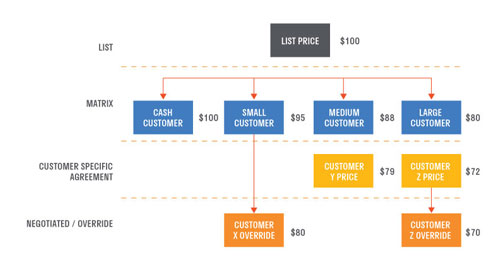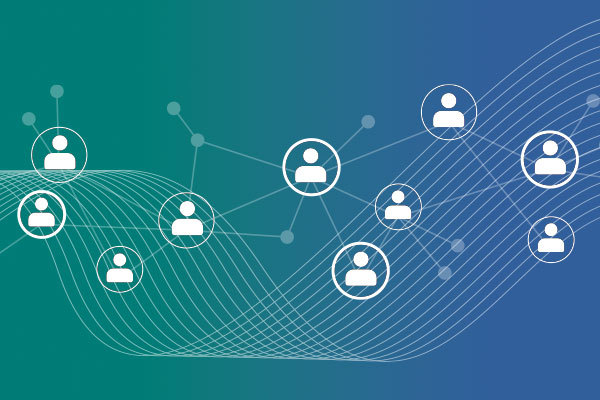Pricing Software: What it is and How it Works
By Zilliant
Aug 23, 2022
Table of Contents
Learn all about B2B pricing software in our comprehensive explainer, including a breakdown of pricing analytics, price management, price optimization, deal management, and price execution functionality.
What is Pricing Software?
Originating in the travel and hospitality industries as revenue management software, pricing software has been developed to serve industries ranging from retail to B2B to financial services and telecommunications. B2B pricing software helps businesses analyze, manage, optimize and execute their prices. It first emerged in the late 1990s and has since been used by many manufacturing, distribution, and industrial services companies.
The sophistication of the algorithms, ability to process large amounts of data quickly, and the delivery of pricing software has changed drastically. However, many of the core B2B pricing challenges still exist and have only been exacerbated by the pace of business and technological challenges.
In this post, we’ll explain pricing software in the context of B2B. This includes looking at the types of pricing software, who can benefit from it, the typical realized benefits, and tips for selecting the right pricing software vendor for your business.
What Are the Four Types of Pricing Software?
The four types of pricing software include pricing analytics, price management, price optimization, and price execution software. Here's a breakdown of each type:
Pricing Analytics: This is most often used in conjunction with price management or price optimization software to help businesses understand their current pricing performance and where they may have opportunities to improve.
A primary example is margin driver analysis. Margin driver analysis isolates the factors that drive margins, lights up the trends and makes actionable recommendations. Often presented as a waterfall chart, the output gives companies a holistic view of changes over any user-defined time period. The output explains exactly how much of the margin change is due to price, volume, cost and mix.
Take a look at a more detailed example in our Margin Driver Analysis blog post.
Price Management: Pricing teams most frequently use this type of software to set prices for new products, update existing price lists or matrix prices and mass update customer-specific prices. A common example is the need to update global price lists and cascade those prices changes to multiple country price lists. View an example demonstration in this Global and Country Price List webinar.
Price Optimization: Price optimization software utilizes artificial intelligence to measure price elasticity and predict the outcomes of various pricing strategies to generate revenue- or profit-maximizing prices. Read our in-depth explanation of price optimization.
Price Execution: Price execution is how prices are ultimately calculated and delivered directly to the end customer or a sales rep. The purpose can be to create or update a quote or agreement. It can also be for entering an order. A powerful pricing engine that uses a high-availability API can perform complex price calculations and deliver prices in real-time in any sales rep- or customer-facing application, such as an ERP system, CPQ tool, CRM or eCommerce site.
View an example demonstration in this price guidance webinar. Another common price execution use case is deal or agreement management software. Sales reps can use the software to track customer-specific prices, contracts and agreements.
Read More: What is Deal Management?and What is Dynamic Pricing?
How is Pricing Software Used for the Most Common B2B Price Modes?

Different types or a combination of pricing software are used to manage the various price modes in B2B. A price mode is a framework for understanding how a company arrives at a price for a given customer, which typically takes on similar forms across many industries in B2B.
Price modes (pricing architecture) each have their place. However, price modes tend to drift away from their original intent and are used inconsistently. This is where pricing software becomes particularly helpful. Here are the four main price modes and the common challenges with each:
List Price:
- Price lists tend to quickly become stale. This results in product-value relationships, such as good-better-best and private labels, not reflected in price lists. Additionally, cost changes are not pushed through intelligently or quickly enough.
- List prices should be a company’s North Star, the reference point for discounts. The increasing number of products, relationships and competitive considerations often render the list price meaningless when managed manually. Therefore, it's unusable as a reference price.
- B2B companies often further complicate list prices by artificially inflating the price. This is to influence pricing decisions made by sales reps. This is a tactic that rarely works in practice.
- Tip: Price optimization software can be used to optimize and fix list prices at the outset. Price management software, accompanied by price analytics software, is best suited for ongoing management of list prices.
Matrix/System Price:
Grid where groups of similar customers and products are assigned to specific matrices. When assigned correctly, this can be the most profitable price mode. However,
- Often, sales reps have the power to reassign customers to more favorable price tiers. This causes nearly all customers to get the lowest price. Then when combined with stale list price reference values, customers can be mis-assigned and receive prices that don’t reflect their relationship with the company.
- Matrix prices often lack the proper level of granularity, or dimensions, to ensure the prices are market-aligned and competitive enough to win the deal; thus they are ignored by the sales reps in favor of overrides and special price exceptions. Data science-driven price segmentation, which accounts for the customer, product and order dimensions that influence price response, is required to achieve the necessary granularity to make prices relevant and gain market adoption. Establishing this segmentation structure may exceed the resources available in-house.
- As costs change, matrix prices are often cumbersome and difficult to update. Even when this process is relatively efficient, if a small percentage of revenue is transacted on the matrix, companies may only recoup a small portion of a cost increase through price, as other price modes are harder to immediately affect.
- Tip: If your business only requires a simple matrix structure with one or two differentiating factors, price management software is well suited. Price optimization software is strongly recommended to ensure customers and products are assigned and grouped correctly. Price optimization software also ensures the right level of granularity exists, and price elasticity is used as the basis to set prices.
Customer-Specific Prices:
Two types exist in this category, customer-specific price exceptions and customer contracts (largest and most valuable customers).
- B2B companies often see a proliferation of customer-specific price exceptions when matrix prices are not market-aligned. These often lead to margin leakage due to poor price initial setting, poor record creation/management, lack of an approval and ongoing review process, and a fundamental lack of strategy behind the process.
- It’s not uncommon for hundreds of thousands to millions of these pricing records to exist in a business. That many records creates an overwhelming administrative burden. It makes it nearly impossible to execute price changes as costs or other dynamics change.
- Many price exceptions are set with no expiration date, at a net price level or a generic markup over cost and fall victim to the “set and forget” conundrum.
- Since customer contracts are reserved for key customers, sales reps are very protective of them. It can be a challenge to enact a price increase, regardless of how outdated the contract.
- Tip: A combination of price optimization and price management software should be used to generate and mass update customer-specific prices. The key is to ensure you have robust deal or agreement management software. That software should seamlessly connect to the price management/optimization applications. This will alert sales reps to customer-specific price changes and can take action.
Override Prices:
Prices that are different from the list or matrix in a one-time, negotiated capacity.
- When left without guardrails, these can lead to rampant over-discounting based on rule-of-thumb margin targets. This results in inconsistent prices from rep-to-rep and misaligned prices.
- Attempts to institute approval processes can often result in delays and lower win rates, if not instituted appropriately.
- Tip: Price optimization is best suited to generate market-aligned negotiation deal envelopes. Those deal envelopes reflect the uniqueness of each and every selling situation. This gives you the best chance of sales reps accepting the guidance window and reducing over-discounting behaviors.
Watch: Moving as Fast as the Market - Use Cases for Pricing Software
What Are the Typical Benefits of Pricing Software?
The average B2B company is experiencing profit margin leakage from pricing inconsistencies and misaligned market pricing ranging from 1.8% to 13.4%., based on benchmark data.
Misaligned pricing refers to transacting business at prices that fail to align rationally to customer size, order size, product value (good-better-best) and other key value dimensions. For example, a small customer may get a better price than a large customer for the same product, all else being equal. It also includes pricing that does not quickly and accurately account for cost changes. Risk exposure to the latter is only increasing as cost changes occur more frequently and unpredictably in a global recessionary environment.
Inconsistent pricing means that prices are transacted below a minimum margin threshold, showing exceedingly wide variances under similar selling circumstances. Price grooving is also a common source of margin leakage. Price grooving creates inconsistency as prices are rounded to the nearest dollar or offered at only discrete margins, such as 30%, where perhaps a margin of 33.5% would have been sufficient to win the deal.
Not all of the lost profit identified above is able to be recovered. Pricing software usually improves gross margins by 1-3%, with price optimization software usually providing the biggest improvement. Companies also see significant efficiency improvements, including reduced pricing errors.
Who Can Benefit from Pricing Software?
According to Gartner’s Market Guide for B2B Price Optimization and Management Software published in March 2019:
“PO&M software is not a good fit for every organization, but Gartner recommends considering it in one or more of the following situations:
The volume or rate of list price changes is impractical or expensive for people to perform without automation. Price management is distributed across multiple regions but requires some centralized control. The organization seeks to leverage advanced statistics and machine learning to fix suboptimal pricing practices identified in historical deals. It has a large volume of clean, historical sales transactions with which to train the PO&M models. The organization wants to calculate prices and discounting thresholds in real time based on factors such as the type of customer, the mix of products, product costs, product availability, competitors, geography and corporate priorities (for example, targeting revenue or margin).”
How Do I Choose the Right Pricing Software Partner?
Reputable analyst firms such as Gartner and IDC often produce research on the strengths and weaknesses of each pricing software company. Here are some key considerations:
Experience in your industry or experience solving a similar pricing challenge Technology stack of the pricing software vendor and ease of integrating into your systems. Tip: Cloud-native architecture, multi-tenant software-as-a-service provides the greatest flexibility and scalability. It also negates the need for costly upgrades in the future Pricing software capabilities Speed of implementation Return on investment Customer satisfaction The vendor’s ability to understand your business and fit their pricing solutions to your business
According to IDC, Zilliant customers experience the highest ROI, shortest time to value and best customer satisfaction. You can see what our customers are saying here.
To learn more about Zilliant’s pricing software solutions, schedule time to speak with one of our experts.
FAQ
What Are Pricing Analytics?
Pricing analytics are the foundation of any B2B pricing strategy. Pricing analytics deliver crucial, highly visual, intuitive, and data-driven insight into what price changes should be made, how those changes will impact margin, revenue and volume, price performance and realization, and the behavior of sales reps and customers in relation to various pricing strategies.
Learn More: An In-Depth Overview of Pricing Analytics
What is Price Management?
Price management is the function of creating and updating pricing within a business. It includes setting and managing pricing across a variety of price modes such as list, matrix, negotiation, or customer-specific. Price management also includes updating prices when necessary, managing pricing segments, measuring key performance indicators (KPIs) and setting pricing strategy.
Learn More: An Introduction to Price Management
What is Price Optimization?
Price optimization is a process that utilizes artificial intelligence to measure price elasticity and predict the outcomes of various pricing strategies to generate pricing that wins the business without sacrificing margin.
Learn More: Price Optimization: A Guide to Maximizing Profits
What is a Real-Time Pricing Engine?
A real-time pricing engine executes real-time price calculations (or real-time price builds) in response to calls from any commercial system. It incorporates an unlimited number of disparate data sets into the pricing engine. It also performs complex calculations on demand and enables real-time price delivery back into commercial systems.
Learn More: What is a Real-Time Pricing Engine?
What is Pricing Optimization Software?
Price optimization software utilizes artificial intelligence to measure price elasticity and predict the outcomes of various pricing strategies to generate revenue- or profit-maximizing prices.



